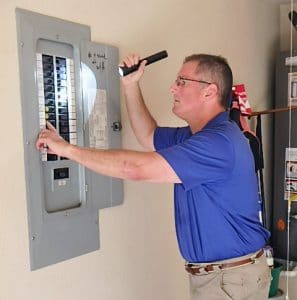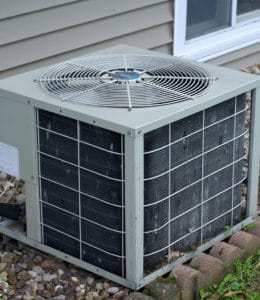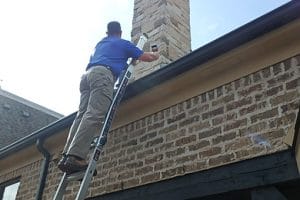Home Inspection Resources
A home is a highly complex ecosystem of structural elements, electrical and gas systems, plumbing components, and landscape features. And purchasing one is likely the biggest investment you will make in your lifetime. This is why a home inspection is one of the most important steps you will take along your home buying journey. A thorough inspection by a qualified, experienced inspector is key to making sure the home you want to purchase is structurally sound and that critical systems are functioning properly. Most importantly, it helps you know that your property — inside and out — is safe for your family, friends, and four-legged companions.
Keith Boggs, owner and inspector of Stonebriar Property Inspections, has developed an inspection process that entails checking 30 different areas and over 600 items composed of parts and components in the thousands. He has performed more than 6,000 inspections with an unusually low error rate in the home inspection industry. And while the Texas Real Estate Commission (TREC) requires a six-page report with check boxes, minimal commentary, and no pictures, he produces reports of 35 to 70 pages — with some reports over 100 pages. The reports are filled with photos, detailed findings, and recommendations for repairs. He also performs a video debrief with nearly all clients, even if they are unable to attend the inspection.
Stonebriar Property Inspections also wants to make sure you have the information you need to fully understand the home inspection process and how your home works. So, we’ve created a library of resources to help. Click the links below to access this valuable information. We hope you find it useful!
General Home Safety Inspection Resources
TREC describes the job of a home inspector as a visual survey and basic performance evaluation of the systems and components of a home that provides information regarding its general condition. A simple description for a very complex job! Your home inspector is looking at structural systems, appliances, HVAC systems, electrical systems, plumbing components, appliances, roofs, outbuildings, garages, and much more. Safety is a key focus of the inspection as well, which includes testing smoke and carbon monoxide alarms, garage door openers, and structural defects that could cause harm. We’ve compiled a list of resources to help you understand more about how the home inspection works at a high level.
Electrical Inspection Resources
One of the most complex parts of the home inspection process is the assessment of the home’s electrical components. There are many working parts, and most of them are hidden behind walls, in crawl spaces, and in attics. But, it’s critical to get this part right, because it identifies those high-priority faults that could cause electrical shocks and fires, putting health, safety, and your investment in the property at risk. We’ve collected some articles to help you understand what’s involved with this part of the home inspection.
Heating and Air Conditioning Inspection Resources
An HVAC system (short for heating, ventilation, and air conditioning) is the complex, integrated ecosystem of a home’s heating and air conditioning equipment connected by pipes, ducts, and electrical components. And it’s an important system — keeping the home warm in the winter and cool in the Texas summer heat, maintaining indoor air quality, and removing excess moisture that could lead to mold and water damage. A thorough inspection ensures the HVAC system runs properly and with high energy efficiency to reduce cost and environmental impact. If you want to learn more about this part of the inspection, we’ve collected resources to help.
Plumbing Inspection Resources
According to the American Insurance Association, almost 40 percent of all homeowners have said they’ve experienced loss from water damage, which is the second most frequently filed insurance claim in the United states. A 1/8-inch crack in a pipe can release 250 gallons of water a day. And minor water leaks in homes account for more than 1 trillion gallons of water wasted each year. Those are staggering numbers that lead one to recognize the importance of a thorough plumbing assessment as part of the home inspection process. Learn more about what’s involved with these resources we’ve curated for you.
Foundation Inspection Resources
The clay minerals in our Texas soil have intense water absorption power, which means they expand when wet. This factor and drainage issues are the primary causes of foundation damage in our area. Foundations can crack, which may or may not cause structural issues but can allow moisture to find its way into the home if left untreated. They can also settle and sink, which could involve the need to install new piers. And foundation defects are not easy — or inexpensive — to fix. The average cost of foundation work in the Dallas area is around $5,000, but serious issues can cost as much as $10,000 to $30,000 to address. We’ve compiled a list of resources to help you understand what’s important to know about your home’s foundation.
Roof Inspection Resources
Roofing defects are commonly identified during a home inspection. They could be minor issues, for example, loose or missing shingles, defective flashing, or gutter damage. Or they could be more major defects, like inadequate structural support, chimney damage, or significant faults that can lead to major water damage and mold. It’s not uncommon to find roofs that are in serious need of replacement — something that any home buyer wants to know before they come to a final agreement with the seller. To learn more about what’s involved in a roof inspection, check out these resources we’ve collected.







